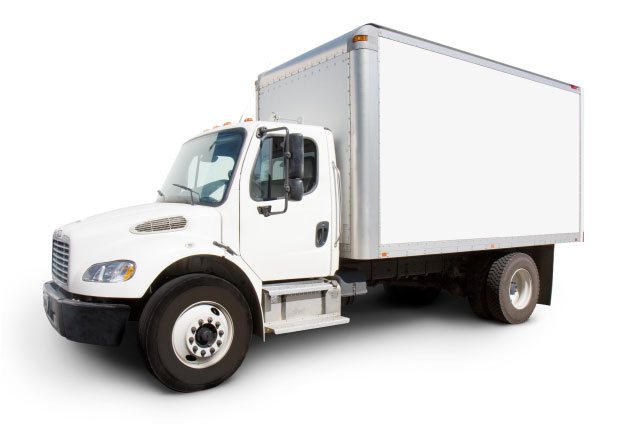Expert Tips for Storing Your Sofa Long-Term
Posted on 22/05/2025
Expert Tips for Storing Your Sofa Long-Term
Your sofa is one of the most significant investments in your home, offering comfort and style for years. But what happens when you need to move, renovate, or simply require space? Whether you're relocating, downsizing, or redecorating, storing a sofa long-term requires thoughtful preparation. In this comprehensive guide, we'll share expert tips for storing your sofa long-term to ensure it stays in pristine condition.

Why Proper Sofa Storage Matters
Long-term sofa storage can be challenging without proper care. Sofas are susceptible to moisture, dust, and pest damage if not well-protected. Understanding how to store your couch correctly prevents unnecessary wear, sagging, stains, and unpleasant odors.
- Prolongs Furniture Lifespan: Well-stored sofas can last generations.
- Saves Money: Prevents costly repairs and early replacements.
- Keeps Value Intact: Ideal for selling or handing down in the future.
Before You Store: Prepare Your Sofa Properly
1. Clean and Dry Your Sofa Thoroughly
- Remove all cushions and vacuum thoroughly under the cushions, in crevices, and along seams to eliminate dirt, dust mites and food particles.
- For fabric sofas, use a fabric-safe upholstery cleaner or a mild soap solution. Follow with a damp (not wet) cloth to remove residue.
- Leather sofas should be wiped down with a soft cloth and cleaned with a leather-specific cleaner. This not only removes dirt but also conditions the leather.
- Allow the entire sofa and cushions to air dry completely. Never store a damp sofa as moisture can cause mold and mildew.
2. Disassemble When Possible
Disassembling your sectional, loveseat, or standard sofa makes it easier to handle and maximizes storage space.
- Remove legs, arms, and cushions where feasible - refer to the manufacturer's instructions.
- Wrap small, removable sofa parts separately and store hardware in clearly labeled bags.
- Keep a diagram or take photos during disassembly to simplify reassembly later.
3. Choose the Right Cleaning Products
Not all cleaning agents are suitable for every sofa. Always spot test and use products recommended for your specific material:
- Use fabric-protector sprays for cloth sofas to repel moisture and stains.
- Apply a leather conditioner to prevent drying and cracking if you own a leather couch.
Selecting the Ideal Storage Space for Your Couch
1. Opt for Climate-Controlled Storage Units
The single most important aspect of long-term sofa storage is choosing the right environment. Fluctuations in temperature and humidity can ruin upholstery and wooden frames.
- Seek storage facilities that offer climate and humidity control. Maintaining a steady environment preserves fabric, stuffing, and structure.
- If a professional facility is unavailable, choose a space within your home, like a dry basement (with a dehumidifier) or an unused room above ground level.
2. Avoid Unprotected Outdoor or Garage Storage
- Garages, sheds, and exterior spaces are vulnerable to temperature swings and pests. Exposure can damage your sofa irreversibly.
- If only non-climate-controlled options exist, use heavy-duty covers, moisture absorbers, and regularly inspect your stored furniture.
3. Elevate Your Sofa Off the Floor
- Use pallets or risers to keep the sofa above ground level. This prevents water damage from leaks and reduces exposure to pests.
- Make sure your couch sits securely and is level to avoid warping of the frame.
How to Protect Your Sofa in Storage
1. Wrap and Cover Your Sofa Correctly
- Use high-quality, breathable sofa covers or blankets to guard against dust and dirt.
- Avoid plastic wrap for long periods; it can trap moisture and cause mold. If using plastic, make sure to leave ventilation gaps.
- Wrap sofa cushions separately for extra protection.
2. Use Protective Pads and Materials
- Place furniture pads, foam, or old blankets between the sofa and storage walls or adjacent items to prevent scratches and dents.
- For leather couches, use acid-free paper between pieces to avoid sticking.
3. Position Sofa Upright or Flat
- Store your sofa upright (as it would sit in your home) when possible.
- Avoid placing heavy objects on top, as this can cause crushing, indentations, or misshaping.
Preventing Damage During Long-Term Couch Storage
1. Ensure Adequate Air Circulation
- Do not seal the storage room or wrap the sofa too tightly. Good airflow prevents mold and mildew growth.
- Place moisture absorbers or desiccant packs around the space, especially in humid climates.
2. Avoid Direct Sunlight
- Sunlight fades fabrics and dries leather. Store your sofa in a shaded area away from windows or cover windows with UV-blocking film.
3. Monitor for Pests
- Regularly check for signs of rodents or insects. Use safe pest deterrents such as cedar blocks or sachets in and around your sofa.
4. Don't Stack Items on Your Sofa
- Stacking boxes or heavy items on your couch during storage can damage the frame and cushions. Always store larger items beside--not on--your sofa.
Periodic Maintenance During Storage
Even the best-stored furniture benefits from occasional attention. Here's how to maintain your sofa's condition:
- Visit your storage unit every few months to inspect your sofa for musty odors, mold, or pest damage.
- Gently shake covers and air out your sofa if safe to do so.
- Reapply fabric or leather protectant as needed to maintain the material's integrity.
Reassembling and Reintroducing Your Sofa
1. Unwrap Carefully
- Remove all protective covers and inspect your sofa for any issues before bringing it back into your living space.
- Avoid using sharp tools when unwrapping to prevent accidental tears in the upholstery.
2. Clean and Freshen
- Wipe down all surfaces. For fabric sofas, consider vacuuming with a HEPA filter attachment.
- If desired, use a gentle freshening spray safe for your sofa type to eliminate any lingering odors.
3. Reassemble with Care
- Refer to your photos or diagrams for proper reassembly.
- Tighten all screws and bolts securely but avoid over-tightening.
- Replace removable legs and attach cushions for a finished look.
Common Mistakes to Avoid When Storing Your Sofa Long-Term
- Skipping the cleaning step before storage, which can lead to deep-set stains and odors.
- Using non-breathable plastic that traps moisture and causes mold growth.
- Storing the sofa directly on the ground, increasing the risk of water and pest damage.
- Failing to monitor the storage space periodically, which may let minor problems escalate unnoticed.
- Storing items on your sofa, resulting in frame or cushion deformation.

Bonus Tips: Long-Term Sofa Storage for Specialty Materials
For Leather Sofas
- Condition leather thoroughly before storage.
- Ensure covers are breathable--prefer cloth over plastic or vinyl.
For Antique or Delicate Sofas
- Consult a professional furniture conservator for specialized advice.
- Use archival-quality padding and covers.
- Maintain consistent temperature and humidity in storage.
For Sectionals or Modular Sofas
- Label each section during disassembly for smoother reassembly.
- Store each module separately, ensuring protective padding on all sides.
Conclusion: Keep Your Sofa Safe for the Long-Haul
With these expert tips for long-term sofa storage, you'll protect your valuable couch from damage and ensure it's ready to use when you need it again. The right preparation, a climate-controlled environment, and regular checks make all the difference. By following these best practices, you're investing in the longevity, beauty, and comfort of your sofa for years to come.
Remember: Cleaning, wrapping with breathable materials, and selecting the right storage location are crucial steps in the process. Treat your sofa with the care it deserves and enjoy the peace of mind that comes from knowing your furniture is secure, protected, and looking its best--even in long-term storage.
For more home storage and furniture care guides, explore our website and discover expert solutions for every room in your home.





